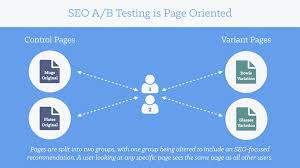The Art and Science of Software Development
Software development is both an art and a science that plays a crucial role in shaping the modern world. It encompasses the process of designing, creating, testing, and maintaining software applications that are used across various industries and sectors.
One of the key aspects of software development is problem-solving. Developers analyse complex problems and design solutions using programming languages such as Java, Python, C++, and more. They leverage their creativity and logical thinking to craft efficient and effective software that meets specific requirements.
Collaboration is another essential element in software development. Teams of developers, designers, testers, and project managers work together to bring a software project to life. Communication and teamwork are vital to ensure that all aspects of the development process align with the project goals.
Continuous learning is inherent in software development due to the ever-evolving nature of technology. Developers must stay updated with the latest trends, tools, and techniques to deliver cutting-edge solutions. They engage in ongoing training and professional development to enhance their skills.
Quality assurance is paramount in software development to ensure that applications function correctly and meet user expectations. Testing processes such as unit testing, integration testing, and user acceptance testing help identify bugs and errors before software is deployed.
Agile methodologies have revolutionised the way software projects are managed. Agile promotes iterative development, collaboration with stakeholders, flexibility in responding to changes, and delivering working software incrementally. This approach enhances efficiency and adaptability in the development process.
In conclusion, software development combines creativity, problem-solving skills, collaboration, continuous learning, quality assurance, and agile methodologies to create innovative solutions that drive progress in today’s digital age. It remains a dynamic field that empowers individuals and organisations to harness the power of technology for positive change.
Essential Tips for Effective Software Development: Enhancing Code Quality and Team Collaboration
- Write clean and readable code for easier maintenance
- Use version control to track changes and collaborate effectively
- Test your code thoroughly to ensure reliability and identify bugs early
- Follow best practices and coding standards to improve code quality
- Document your code to make it easier for others to understand and use
- Stay updated with latest technologies and trends in software development
- Break down complex problems into smaller, manageable tasks for better efficiency
- Communicate regularly with team members to stay aligned on project goals
Write clean and readable code for easier maintenance
When it comes to software development, a crucial tip is to write clean and readable code to facilitate easier maintenance in the long run. By adhering to coding best practices and maintaining consistency in formatting, naming conventions, and documentation, developers can enhance the clarity and understandability of their codebase. Clean code not only streamlines the debugging process but also simplifies future updates and modifications, making it more manageable for developers to maintain and extend the software efficiently. Prioritising clean and readable code promotes collaboration among team members, reduces errors, and ultimately contributes to the overall quality and longevity of the software product.
Use version control to track changes and collaborate effectively
Utilising version control is a fundamental tip in software development to monitor changes and facilitate seamless collaboration among team members. By employing version control systems like Git, developers can track modifications made to the codebase, revert to previous versions if needed, and merge contributions from multiple team members efficiently. This practice not only enhances transparency and accountability but also ensures that the project progresses smoothly with minimal conflicts or errors.
Test your code thoroughly to ensure reliability and identify bugs early
Testing your code thoroughly is a critical step in the software development process to guarantee reliability and detect bugs at an early stage. By conducting comprehensive testing, developers can identify and rectify potential issues before they escalate, ensuring that the final product meets quality standards. Thorough testing not only enhances the overall performance of the software but also instils confidence in its functionality, ultimately leading to a smoother user experience and higher customer satisfaction.
Follow best practices and coding standards to improve code quality
By adhering to best practices and coding standards in software development, developers can significantly enhance the quality of their code. Following established guidelines ensures consistency, readability, and maintainability of the codebase. It also promotes efficiency in collaboration among team members and facilitates easier debugging and troubleshooting. By prioritising code quality through best practices and standards, developers can create robust, scalable, and reliable software solutions that meet the highest industry standards.
Document your code to make it easier for others to understand and use
Documenting your code is a valuable practice in software development that enhances the readability and usability of your codebase for other developers. By providing clear and concise explanations within the code, you enable others to understand the logic, functionality, and purpose of each component more easily. This not only facilitates collaboration among team members but also ensures that future modifications or troubleshooting tasks can be carried out efficiently. Effective documentation serves as a roadmap for navigating through the codebase, ultimately contributing to the maintainability and longevity of the software project.
Stay updated with latest technologies and trends in software development
Staying updated with the latest technologies and trends in software development is essential for professionals in the field to remain competitive and deliver cutting-edge solutions. By keeping abreast of new tools, programming languages, frameworks, and methodologies, developers can enhance their skills, improve efficiency, and meet the evolving demands of the industry. Continuous learning not only broadens one’s knowledge but also fosters innovation and adaptability in tackling complex challenges. Embracing new technologies empowers developers to stay ahead of the curve, driving progress and success in the dynamic world of software development.
Break down complex problems into smaller, manageable tasks for better efficiency
Breaking down complex problems into smaller, manageable tasks is a fundamental tip in software development that significantly enhances efficiency. By dividing a large problem into smaller, more digestible components, developers can focus on solving one task at a time, leading to clearer understanding and streamlined progress. This approach not only makes the problem-solving process more manageable but also allows for better organisation, prioritisation, and collaboration within the development team. Ultimately, breaking down complex problems into smaller tasks paves the way for more efficient and effective software development outcomes.
Communicate regularly with team members to stay aligned on project goals
Regular communication with team members is a fundamental tip in software development to ensure alignment on project goals. By engaging in ongoing discussions and updates, team members can share progress, address challenges, and collectively work towards achieving the desired outcomes. Clear and open communication fosters collaboration, enhances teamwork, and helps prevent misunderstandings or diverging paths. It promotes a shared understanding of project objectives, priorities, and timelines, ultimately leading to more efficient and successful software development projects.




